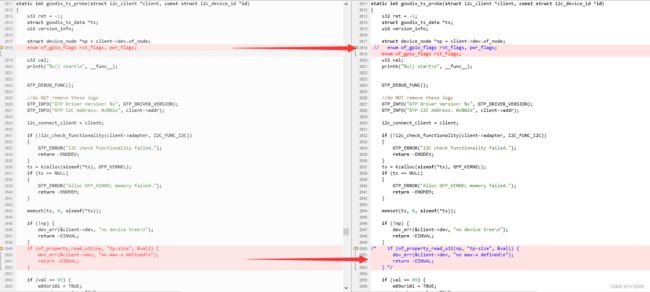- OceanBase数据库常用巡检SQL
MoMoSQL666
数据库oceanbasemysqlsql
本文为墨天轮数据库管理服务团队原创内容,如需转载请联系小墨(VX:modb666)并注明来源。一、版本信息select*frominformation_schema.GLOBAL_VARIABLESWHEREVARIABLE_NAMElike'version%';二、集群状态select*fromoceanbase.v$ob_cluster;三、服务器状态检查所有服务器的状态,包括这个Server
- 麒麟V10 arm cpu aarch64 下编译 RocketMQ-Client-CPP 2.2.0
eamon100
Linux操作系统java-rocketmqrocketmqc++
国产自主可控服务器需要访问RocketMQ消息队列,最新的C++SDK是2020年发布的rocketmq-client-cpp-2.2.0这个版本支持TLS模式。用默认的版本安装遇到一些问题,记录一下。下载Releases·apache/rocketmq-client-cpp·GitHubhttps://github.com/apache/rocketmq-client-cpp/releases操
- 前端性能优化之SSR优化
xiangzhihong8
前端前端
我们常说的SSR是指Server-SideRendering,即服务端渲染,属于首屏直出渲染的一种方案。SSR也是前端性能优化中最常用的技术方案了,能有效地缩短页面的可见时间,给用户带来很好的体验。SSR渲染方案一般来说,我们页面加载会分为好几个步骤:请求域名,服务器返回HTML资源。浏览器加载HTML片段,识别到有CSS/JavaScript资源时,获取资源并加载。现在大多数前端页面都是单页面应
- 服务器使用宝塔上传文件时卡住了的解决办法
Frozen-tzy
服务器运维linux
当我用宝塔向服务器上传文件时,它一直显示上传速度是0,卡住不动了。还有一种情况是上传到一半失败了,这时报了一个磁盘空间不足的错。这时我们来看宝塔面板首页的磁盘空间,一般会看到它是红色的,接近100%,这时我们就需要清理掉服务器中不必要的文件(比如日志、缓存等)我们也可以通过命令来查看磁盘的使用情况:通过SSH登录服务器df-h输出示例FilesystemSizeUsedAvailUse%Mount
- 查看 Linux 系统中安装的 CUDA 版本
烟锁池塘柳0
LinuxCUDAlinuxubuntu
查看Linux系统中安装的CUDA版本的常见方法:文章目录1查看/usr/local/cuda目录2使用nvcc命令3检查libcublas版本注意:nvidia-smi1查看/usr/local/cuda目录通常,CUDA被安装在/usr/local/cuda目录下,所以可以使用ls命令来查看这个目录是否存在,以及查看其中的内容。ls/usr/local/cuda如果这个目录存在,通常它会是一个
- 云原生边缘计算:分布式智能的时代黎明
桂月二二
云原生边缘计算分布式
引言:从集中式算力到万物智联的范式裂变AT&T边缘节点部署超5000个,特斯拉自动驾驶系统每节点200TOPS算力。国家电网通过边缘计算实现毫秒级电网故障隔离,菜鸟物流分拣效率提升400%。IDC预测2027年边缘基础设施支出将达亿,宝马汽车工厂设备预测性维护准确率达9亿运维成本。一、边缘计算范式进化论1.1算力拓扑结构演变世代大型主机中心化云计算分布式雾计算去中心化边缘计算泛在化神经形态计算体计
- linuxcentos6笔记
lnes,
linuxcentosvim
目录Linux笔记11目录结构51.1基本指令51.2Ls指令:51.3Pwd指令:61.4Cd指令:71.5mkdir指令:71.6touch指令:71.7cp指令:71.8mv指令:81.9rm指令:81.10vim指令:91.11输出重定向:91.12cat指令:102进阶指令102.1Df指令:102.2free指令:102.3head指令:112.4tail指令:112.5less指令:
- 常用的pdf技术有哪些?--笔记
我不是彭于晏灬
pdf笔记
常用的pdf技术有哪些?1.iTextPDF:iText是著名的开放项目,是用于生成PDF文档的一个java类库。通过iText不仅可以生成PDF或rtf的文档,而且可以将XML、Html文件转化为PDF文件。Openoffice:openoffice是开源软件且能在windows和linux平台下运行,可以灵活的将word或者Excel转化为PDF文档。JasperReport:是一个强大、灵活
- 记服务器MongoDB数据库迁移实战记录【云MongoDB数据库迁移】
一键难忘
数据库mongodb服务器
文章目录一.服务器MongoDB数据库迁移实战记录1.1备份MongoDB数据库步骤1.2恢复数据库到新服务器里1.3总结一.服务器MongoDB数据库迁移实战记录1.背景:我原来的服务器到期了,因为高昂的费用我只能使用新用户的身份购买一个服务器。2.需求:将原来的云端MongoDB数据库迁移到新购买的服务器上。3.注意:之前的MongoDB并没有使用宝塔的可视化创建,而是使用命令行,导致,可视化
- linux 安装jdk1.8
李逍遙️
linux运维服务器
通过终端,使用wget命令下载JDK:wgethttps://download.java.net/openjdk/jdk8u41/ri/openjdk-8u41-b04-linux-x64-14_jan_2020.tar.gz解压下载的文件。你可以使用tar命令解压:tar-xzfopenjdk-8u41-b04-linux-x64-14_jan_2020.tar.gz将解压后的JDK移动到/op
- dig 命令深入学习
服务器linuxdns解析
一、dig命令有什么用dig命令(DomainInformationGroper)是一个用于查询DNS(域名系统)记录的强大工具,它提供了详细的DNS信息,主要用于帮助用户诊断、调试和验证与域名解析相关的问题。除了dig命令,还有一种跟dig功能是差不多的命令nslookup二、dig命令安装如果您的Linux系统默认没有安装dig,可能会提示dig:commandnotfound。请使用以下命令
- 软件定义世界下的教育创新:高校计算机实验室应重心转向开源平台
开源
一、一键式教学环境部署,节省90%准备时间•应用模板库:提供200+预置教学工具模板(如JupyterLab+TensorFlow、MySQL集群),教师可根据课程需求选择模板,5分钟内完成包含依赖库、运行环境的全栈部署。•多版本隔离:支持同一服务器并行运行不同版本框架(如Django3.2教学版与4.1开发版),避免版本冲突导致30%的课堂时间浪费。•自助式环境创建:学生通过命令行快速申请带GP
- 浏览器开发者工具深度调试指南:从入门到高阶技巧
109702008
编程网络人工智能网络
浏览器开发者工具(DevTools)是现代前端工程师的"瑞士军刀",本文将系统解析其核心功能与实战技巧,助您掌握高效调试的终极奥义。一、基础操作与核心功能1.1工具启动方式快捷键:F12(Win/Linux)|Cmd+Opt+I(Mac)右键菜单:网页任意位置右键→检查(Inspect)移动端调试:启用设备模式(Ctrl+Shift+M)1.2核心面板全景图面板名称核心功能快捷键切换Element
- 探索 LangChain、Hugging Face、LM Studio 等 AI 应用工具
Alex程
langchain人工智能
目录1.LangChainv0.2简介安装概念指南简单试用(1)模型选择(2)基础操作(3)更多操作Runnable调用链的连接Runnable并行自定义函数RunnableLambda额外assign参数(4)langchain.js2.HuggingFace简介如何调用API3.LMStudio简介LMStudio服务器JavaScript/TypeScriptSDK4.Dify.AI简介安装
- qt-5.15.2 源码编译 Linux
weixin_40857106
服务器运维
QT官方源码下载地址:https://download.qt.io/archive/qt/5.15/5.15.12/single/qt-everywhere-opensource-src-5.15.12.tar.xz安装Qt所需的依赖:sudoaptinstallbuild-essentiallibgl1-mesa-devlibxkbcommon-devlibnss3-devlibdbus-1-d
- Java WebSocket与项目页面(通常是HTML + JavaScript)之间建立连接并传输数据
hh_fine
javawebsockethtml
JavaWebSocket与项目页面(通常是HTML+JavaScript)之间建立连接并传输数据1.创建JavaWebSocket服务器:使用JavaWebSocketAPI创建一个WebSocket服务器端点。2.在HTML页面中使用JavaScript连接WebSocket:通过JavaScript的WebSocketAPI与JavaWebSocket服务器建立连接。3.双向数据传输:实现服
- Django系列教程(13)——Cookie和Session应用场景及案例
l软件定制开发工作室
Django教程django
目录什么是cookie,cookie的应用场景及缺点Django中如何使用cookieCookie使用示例什么是session及session的工作原理Django中如何使用会话sessionSession使用示例小结HTTP协议本身是”无状态”的,在一次请求和下一次请求之间没有任何状态保持,服务器无法识别来自同一用户的连续请求。有了cookie和session,服务器就可以利用它们记录客户端的访
- Trae AI 上新 SSHremote:服务器 Python 接口日志排查实战指南
芯作者
DD:日记人工智能深度学习机器学习
在当今的软件开发中,服务器端的稳定性和可靠性至关重要。然而,生产环境中的问题往往难以预测,尤其是接口返回502错误却无日志记录的情况,更是让开发者头疼不已。幸运的是,字节跳动推出的AI原生IDE——Trae,近期上线的SSHremote功能,为远程服务器日志排查提供了全新的解决方案。本文将结合实战案例,深入探讨如何利用TraeAI的SSHremote功能高效排查Python接口日志问题,并分享创新
- 一文搞懂Nginx: 域名配置、SSL、HTTP转HTTPS
千层冷面
知识类httpnginxssllinux
本文将在Centos系统下详解Nginx服务器,从概念、下载、安装、编译、配置(含域名和证书)到启动。本文先讲Nginx如何使用,然后再谈概念。一、实践1.下载下载通常有2种方式:Centos自带的包管理工具、源码编译安装(推荐,拓展性强),本文使用源码编译安装的形式下载从Nginx官网(nginx.org)下载Nginx的源代码。亦可以使用wget命令或者浏览器下载后通过FTP等方式传输到服务器
- 本地源代码运行bun install时报错
星火燎猿
C#疑难杂症处理方案BunBun.js
最近使用Ubuntu系统运行Bun的时候报,Failedtospawnscriptinstallduetoerroros.linux.errno.generic.E.PERMPERM的错误,查看官方文档也没有这个错误描述,最终找到解决方案进行分享。报错问题如下:errorloadingcurrentdirectoryInstalling[2637/2230]error:failedtospawnl
- Beekeeper Studio:高颜值且免费的SQL开发工具
开源项目精选
sql数据库
BeekeeperStudio是一款免费开源的SQL开发和数据库管理工具,具有美观高效、简单易用的特点。BeekeeperStudio基于Vue.js开发,遵循MIT开源协议,支持Windows、Linux以及macOS平台。Stars数17842Forks数1170主要特点安全连接:除了正常的连接,也可以使用SSL加密连接或通过SSH隧道连接;SQL自动补全:代码编辑器支持语法高亮和表名自动补全
- PCDN 与传统 CDN 的对比:优势和劣势分析
yczykjyxgs
pcdn智能路由器
在内容分发领域,PCDN和传统CDN是两种重要的技术手段。传统CDN凭借其成熟的架构,在互联网发展历程中发挥着关键作用。它通过在各地广泛部署缓存服务器,将内容缓存至离用户更近的节点,以此加快分发速度。这种模式下,内容传输路径短,能有效减少延迟,为用户提供稳定的访问体验。不过,传统CDN的大规模服务器部署带来了高昂成本,无论是建设费用还是维护成本都不容小觑。PCDN作为融合了P2P技术的新兴内容分发
- 我所认识的区块链
whg1016
区块链
什么是区块链区块链是一个多节点共同参与,共同确认的记账系统,账本由是由一串串数据块组成的,下一个数据块记录了上个数据的hash,所有的块按照顺序形成一个完整的数据链条。每个节点都有完全一致的账本数据,记录的数据不可篡改和不可伪造。这个链条被保存在所有的服务器中,只要整个系统中有一台服务器可以工作,整条区块链就是安全的。区块链的由来区块链起源于Bitcoin,2008年11月1日,一位自称中本聪(S
- Parrot OS 6.3 发布!全面提升安全性,新增先进工具,带来更高性能
wljslmz
Linux技术linuxParrotOS
2025年2月,全球知名的安全和隐私为核心的Linux发行版——ParrotOS迎来了其最新版本——ParrotOS6.3。作为一款基于Debian的多功能操作系统,ParrotOS旨在为安全专家、开发人员以及关注隐私的用户提供强大的功能支持。ParrotOS6.3版本在性能、工具更新、硬件支持等方面进行了一系列优化,凭借其更加稳定的安全性,最新的工具包,以及对硬件兼容性的大幅提升,ParrotO
- 使用 Python 的 pyttsx3 库进行文本转语音
Bingjia_Hu
python开发语言pyttsx3
1.什么是pyttsx3?1.1pyttsx3是一个Python库,它可以将文本转换为语音。与其他文本转语音库(如gTTS)不同,pyttsx3不依赖于网络服务,它使用本地的TTS(Text-to-Speech)引擎,这使得它在离线状态下也能正常工作1.2pyttsx3支持多平台(Windows、Linux和macOS),且可以对语音的音量、语速以及语音类型等进行控制2.安装pyttsx3要使用p
- 都快3202年了,你还不会用Java生成计算机统一标识符
Heping_Ge2333
java
Java生成计算机统一标识符计算机统一标识符的概念什么是计算机统一标识符?计算机统一标识符就相当于每台电脑每个系统的“身份证”。它是唯一的。通常,计算机统一标识符是根据电脑的硬件情况(主板、cpu的序列号,mac地址)和系统情况(windows/linux/unix)生成的。Java语言的实现下面这段代码浅浅的实现了计算机统一标识符importlombok.Data;importlombok.ex
- Linux常用命令与权限理解总结 续篇
小白要加油努力
Linuxlinux运维服务器
接着前文(Linux常用命令与权限理解总结-CSDN博客)来继续说明一些常见的指令。5.进程管理详解ps-显示进程状态ps命令用于显示当前运行的进程信息。详细用法:ps:显示当前终端的进程ps-e或ps-A:显示所有进程ps-f:全格式列表ps-ef:显示所有进程的完整格式ps-uusername:显示指定用户的进程ps-aux:BSD风格显示所有进程详情ps-axjf:树状结构显示进程(显示父子
- 常用的git和linux命令有哪些?
海姐软件测试
gitlinuxelasticsearch大数据搜索引擎
一、Git常用命令1.仓库与基础操作命令作用常用参数/示例gitinit初始化新仓库gitinitgitclone克隆远程仓库gitclonehttps://github.com/user/repo.gitgitstatus查看仓库状态gitstatus-s(简洁模式)gitadd添加文件到暂存区gitadd.(添加所有文件)gitaddfile1.txtgitcommit提交代码gitcommi
- ubuntu高并发内核参数调优 - (压测客户端调优)
sj1163739403
Linux系统ubuntu
业务上要求集群提供10w+并发,10w+并发听上去不是很难,但10w并发持续1小时呢在业务上线之前还需要我们自己对业务进行压测,俗称benchmark。压测的服务器也是需要进行性能调优的,以下列出调优前后的参数对比,更直观的分析和感受参数对程序的影响压测前内核参数自检#!/bin/bash#脚本名称:check_benchmark_server_kernel_params.sh#描述:查询压测服务
- 从 DeepSeek 到 AI 工具箱:Websoft9 应用托管平台赋能高校教学与科研
人工智能deepseek
从DeepSeek到AI工具箱:Websoft9应用托管平台赋能高校教学与科研人工智能技术的快速发展正在重塑高校的教学与科研生态。从智能教学辅助到跨学科研究,AI工具的应用场景不断扩展,而技术落地的复杂性也带来新的挑战。在这一背景下,如何将大模型能力与多样化AI工具无缝整合,构建安全、易用的科研教学环境,成为高校数字化转型的关键命题。一、高校智能化转型的三大痛点技术门槛高•AI工具部署依赖专业运维
- mysql主从数据同步
林鹤霄
mysql主从数据同步
配置mysql5.5主从服务器(转)
教程开始:一、安装MySQL
说明:在两台MySQL服务器192.168.21.169和192.168.21.168上分别进行如下操作,安装MySQL 5.5.22
二、配置MySQL主服务器(192.168.21.169)mysql -uroot -p &nb
- oracle学习笔记
caoyong
oracle
1、ORACLE的安装
a>、ORACLE的版本
8i,9i : i是internet
10g,11g : grid (网格)
12c : cloud (云计算)
b>、10g不支持win7
&
- 数据库,SQL零基础入门
天子之骄
sql数据库入门基本术语
数据库,SQL零基础入门
做网站肯定离不开数据库,本人之前没怎么具体接触SQL,这几天起早贪黑得各种入门,恶补脑洞。一些具体的知识点,可以让小白不再迷茫的术语,拿来与大家分享。
数据库,永久数据的一个或多个大型结构化集合,通常与更新和查询数据的软件相关
- pom.xml
一炮送你回车库
pom.xml
1、一级元素dependencies是可以被子项目继承的
2、一级元素dependencyManagement是定义该项目群里jar包版本号的,通常和一级元素properties一起使用,既然有继承,也肯定有一级元素modules来定义子元素
3、父项目里的一级元素<modules>
<module>lcas-admin-war</module>
<
- sql查地区省市县
3213213333332132
sqlmysql
-- db_yhm_city
SELECT * FROM db_yhm_city WHERE class_parent_id = 1 -- 海南 class_id = 9 港、奥、台 class_id = 33、34、35
SELECT * FROM db_yhm_city WHERE class_parent_id =169
SELECT d1.cla
- 关于监听器那些让人头疼的事
宝剑锋梅花香
画图板监听器鼠标监听器
本人初学JAVA,对于界面开发我只能说有点蛋疼,用JAVA来做界面的话确实需要一定的耐心(不使用插件,就算使用插件的话也没好多少)既然Java提供了界面开发,老师又要求做,只能硬着头皮上啦。但是监听器还真是个难懂的地方,我是上了几次课才略微搞懂了些。
- JAVA的遍历MAP
darkranger
map
Java Map遍历方式的选择
1. 阐述
对于Java中Map的遍历方式,很多文章都推荐使用entrySet,认为其比keySet的效率高很多。理由是:entrySet方法一次拿到所有key和value的集合;而keySet拿到的只是key的集合,针对每个key,都要去Map中额外查找一次value,从而降低了总体效率。那么实际情况如何呢?
为了解遍历性能的真实差距,包括在遍历ke
- POJ 2312 Battle City 优先多列+bfs
aijuans
搜索
来源:http://poj.org/problem?id=2312
题意:题目背景就是小时候玩的坦克大战,求从起点到终点最少需要多少步。已知S和R是不能走得,E是空的,可以走,B是砖,只有打掉后才可以通过。
思路:很容易看出来这是一道广搜的题目,但是因为走E和走B所需要的时间不一样,因此不能用普通的队列存点。因为对于走B来说,要先打掉砖才能通过,所以我们可以理解为走B需要两步,而走E是指需要1
- Hibernate与Jpa的关系,终于弄懂
avords
javaHibernate数据库jpa
我知道Jpa是一种规范,而Hibernate是它的一种实现。除了Hibernate,还有EclipseLink(曾经的toplink),OpenJPA等可供选择,所以使用Jpa的一个好处是,可以更换实现而不必改动太多代码。
在play中定义Model时,使用的是jpa的annotations,比如javax.persistence.Entity, Table, Column, OneToMany
- 酸爽的console.log
bee1314
console
在前端的开发中,console.log那是开发必备啊,简直直观。通过写小函数,组合大功能。更容易测试。但是在打版本时,就要删除console.log,打完版本进入开发状态又要添加,真不够爽。重复劳动太多。所以可以做些简单地封装,方便开发和上线。
/**
* log.js hufeng
* The safe wrapper for `console.xxx` functions
*
- 哈佛教授:穷人和过于忙碌的人有一个共同思维特质
bijian1013
时间管理励志人生穷人过于忙碌
一个跨学科团队今年完成了一项对资源稀缺状况下人的思维方式的研究,结论是:穷人和过于忙碌的人有一个共同思维特质,即注意力被稀缺资源过分占据,引起认知和判断力的全面下降。这项研究是心理学、行为经济学和政策研究学者协作的典范。
这个研究源于穆来纳森对自己拖延症的憎恨。他7岁从印度移民美国,很快就如鱼得水,哈佛毕业
- other operate
征客丶
OSosx
一、Mac Finder 设置排序方式,预览栏 在显示-》查看显示选项中
二、有时预览显示时,卡死在那,有可能是一些临时文件夹被删除了,如:/private/tmp[有待验证]
--------------------------------------------------------------------
若有其他凝问或文中有错误,请及时向我指出,
我好及时改正,同时也让我们一
- 【Scala五】分析Spark源代码总结的Scala语法三
bit1129
scala
1. If语句作为表达式
val properties = if (jobIdToActiveJob.contains(jobId)) {
jobIdToActiveJob(stage.jobId).properties
} else {
// this stage will be assigned to "default" po
- ZooKeeper 入门
BlueSkator
中间件zk
ZooKeeper是一个高可用的分布式数据管理与系统协调框架。基于对Paxos算法的实现,使该框架保证了分布式环境中数据的强一致性,也正是基于这样的特性,使得ZooKeeper解决很多分布式问题。网上对ZK的应用场景也有不少介绍,本文将结合作者身边的项目例子,系统地对ZK的应用场景进行一个分门归类的介绍。
值得注意的是,ZK并非天生就是为这些应用场景设计的,都是后来众多开发者根据其框架的特性,利
- MySQL取得当前时间的函数是什么 格式化日期的函数是什么
BreakingBad
mysqlDate
取得当前时间用 now() 就行。
在数据库中格式化时间 用DATE_FORMA T(date, format) .
根据格式串format 格式化日期或日期和时间值date,返回结果串。
可用DATE_FORMAT( ) 来格式化DATE 或DATETIME 值,以便得到所希望的格式。根据format字符串格式化date值:
%S, %s 两位数字形式的秒( 00,01,
- 读《研磨设计模式》-代码笔记-组合模式
bylijinnan
java设计模式
声明: 本文只为方便我个人查阅和理解,详细的分析以及源代码请移步 原作者的博客http://chjavach.iteye.com/
import java.util.ArrayList;
import java.util.List;
abstract class Component {
public abstract void printStruct(Str
- 4_JAVA+Oracle面试题(有答案)
chenke
oracle
基础测试题
卷面上不能出现任何的涂写文字,所有的答案要求写在答题纸上,考卷不得带走。
选择题
1、 What will happen when you attempt to compile and run the following code? (3)
public class Static {
static {
int x = 5; // 在static内有效
}
st
- 新一代工作流系统设计目标
comsci
工作算法脚本
用户只需要给工作流系统制定若干个需求,流程系统根据需求,并结合事先输入的组织机构和权限结构,调用若干算法,在流程展示版面上面显示出系统自动生成的流程图,然后由用户根据实际情况对该流程图进行微调,直到满意为止,流程在运行过程中,系统和用户可以根据情况对流程进行实时的调整,包括拓扑结构的调整,权限的调整,内置脚本的调整。。。。。
在这个设计中,最难的地方是系统根据什么来生成流
- oracle 行链接与行迁移
daizj
oracle行迁移
表里的一行对于一个数据块太大的情况有二种(一行在一个数据块里放不下)
第一种情况:
INSERT的时候,INSERT时候行的大小就超一个块的大小。Oracle把这行的数据存储在一连串的数据块里(Oracle Stores the data for the row in a chain of data blocks),这种情况称为行链接(Row Chain),一般不可避免(除非使用更大的数据
- [JShop]开源电子商务系统jshop的系统缓存实现
dinguangx
jshop电子商务
前言
jeeshop中通过SystemManager管理了大量的缓存数据,来提升系统的性能,但这些缓存数据全部都是存放于内存中的,无法满足特定场景的数据更新(如集群环境)。JShop对jeeshop的缓存机制进行了扩展,提供CacheProvider来辅助SystemManager管理这些缓存数据,通过CacheProvider,可以把缓存存放在内存,ehcache,redis,memcache
- 初三全学年难记忆单词
dcj3sjt126com
englishword
several 儿子;若干
shelf 架子
knowledge 知识;学问
librarian 图书管理员
abroad 到国外,在国外
surf 冲浪
wave 浪;波浪
twice 两次;两倍
describe 描写;叙述
especially 特别;尤其
attract 吸引
prize 奖品;奖赏
competition 比赛;竞争
event 大事;事件
O
- sphinx实践
dcj3sjt126com
sphinx
安装参考地址:http://briansnelson.com/How_to_install_Sphinx_on_Centos_Server
yum install sphinx
如果失败的话使用下面的方式安装
wget http://sphinxsearch.com/files/sphinx-2.2.9-1.rhel6.x86_64.rpm
yum loca
- JPA之JPQL(三)
frank1234
ormjpaJPQL
1 什么是JPQL
JPQL是Java Persistence Query Language的简称,可以看成是JPA中的HQL, JPQL支持各种复杂查询。
2 检索单个对象
@Test
public void querySingleObject1() {
Query query = em.createQuery("sele
- Remove Duplicates from Sorted Array II
hcx2013
remove
Follow up for "Remove Duplicates":What if duplicates are allowed at most twice?
For example,Given sorted array nums = [1,1,1,2,2,3],
Your function should return length
- Spring4新特性——Groovy Bean定义DSL
jinnianshilongnian
spring 4
Spring4新特性——泛型限定式依赖注入
Spring4新特性——核心容器的其他改进
Spring4新特性——Web开发的增强
Spring4新特性——集成Bean Validation 1.1(JSR-349)到SpringMVC
Spring4新特性——Groovy Bean定义DSL
Spring4新特性——更好的Java泛型操作API
Spring4新
- CentOS安装Mysql5.5
liuxingguome
centos
CentOS下以RPM方式安装MySQL5.5
首先卸载系统自带Mysql:
yum remove mysql mysql-server mysql-libs compat-mysql51
rm -rf /var/lib/mysql
rm /etc/my.cnf
查看是否还有mysql软件:
rpm -qa|grep mysql
去http://dev.mysql.c
- 第14章 工具函数(下)
onestopweb
函数
index.html
<!DOCTYPE html PUBLIC "-//W3C//DTD XHTML 1.0 Transitional//EN" "http://www.w3.org/TR/xhtml1/DTD/xhtml1-transitional.dtd">
<html xmlns="http://www.w3.org/
- POJ 1050
SaraWon
二维数组子矩阵最大和
POJ ACM第1050题的详细描述,请参照
http://acm.pku.edu.cn/JudgeOnline/problem?id=1050
题目意思:
给定包含有正负整型的二维数组,找出所有子矩阵的和的最大值。
如二维数组
0 -2 -7 0
9 2 -6 2
-4 1 -4 1
-1 8 0 -2
中和最大的子矩阵是
9 2
-4 1
-1 8
且最大和是15
- [5]设计模式——单例模式
tsface
java单例设计模式虚拟机
单例模式:保证一个类仅有一个实例,并提供一个访问它的全局访问点
安全的单例模式:
/*
* @(#)Singleton.java 2014-8-1
*
* Copyright 2014 XXXX, Inc. All rights reserved.
*/
package com.fiberhome.singleton;
- Java8全新打造,英语学习supertool
yangshangchuan
javasuperword闭包java8函数式编程
superword是一个Java实现的英文单词分析软件,主要研究英语单词音近形似转化规律、前缀后缀规律、词之间的相似性规律等等。Clean code、Fluent style、Java8 feature: Lambdas, Streams and Functional-style Programming。
升学考试、工作求职、充电提高,都少不了英语的身影,英语对我们来说实在太重要


